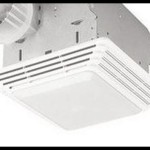Mounting Brackets For Bathroom Sinks: A Comprehensive Guide
Bathroom sinks, essential fixtures in any restroom, rely on secure mounting to ensure stability, functionality, and safety. While various installation methods exist, mounting brackets are a common and often preferred choice for supporting wall-mounted and certain types of countertop sinks. This article provides a comprehensive overview of mounting brackets for bathroom sinks, covering their types, materials, installation considerations, and factors influencing their selection.
Types of Mounting Brackets for Bathroom Sinks
Mounting brackets for bathroom sinks are available in several designs, each suited for specific sink types and installation requirements. Understanding these different types is crucial for selecting the appropriate bracket for a given application.
Wall-Mounted Sink Brackets: These are designed specifically for sinks that are hung directly on the wall, without any base cabinet support. They typically consist of heavy-duty steel or stainless steel brackets that attach to the wall studs. The sink rests on the brackets, transferring its weight to the wall structure. Wall-mounted sink brackets are often adjustable to accommodate minor variations in sink dimensions and wall alignment. These brackets provide a clean, modern look and are ideal for smaller bathrooms where space is limited.
Console Sink Brackets: Console sinks combine a wall-mounted sink basin with supporting legs. Console sink brackets provide additional support to the sink basin, distributing the weight between the wall and the legs. These brackets are usually smaller and less robust than those used for solely wall-mounted sinks, as the legs share a significant portion of the load. Console sink brackets enhance the aesthetic appeal of the sink while providing increased stability.
Countertop Sink Brackets: Although many countertop sinks are supported directly by the vanity cabinet, some installations, particularly those involving heavier materials like stone or concrete, benefit from additional bracket support. These brackets attach to the wall and extend under the countertop, providing extra reinforcement and preventing sagging or shifting of the countertop and sink. Countertop sink brackets are particularly important when the countertop overhangs significantly or when the vanity cabinet is not sufficiently sturdy.
Adjustable Sink Brackets: Adjustable sink brackets offer flexibility in installation, allowing for fine-tuning of the sink's position and height. These brackets typically feature slotted mounting holes or telescoping arms that can be adjusted to accommodate variations in wall alignment or sink dimensions. Adjustable brackets are particularly useful when installing sinks in older homes where walls may not be perfectly plumb or square.
Concealed Sink Brackets: For a minimalist aesthetic, concealed sink brackets provide a clean, seamless look by hiding the support structure behind the sink. These brackets are embedded within the wall during construction or renovation and provide a floating appearance for the sink. Concealed brackets require careful planning and installation to ensure adequate support and stability.
Materials Used in Mounting Brackets
The choice of material for mounting brackets significantly affects their strength, durability, and resistance to corrosion. Common materials include:
Steel: Steel is a strong and cost-effective material commonly used in mounting brackets. Steel brackets are typically coated with a protective finish, such as powder coating or zinc plating, to prevent rust and corrosion. The gauge of the steel determines its load-bearing capacity; thicker steel provides greater strength and stability.
Stainless Steel: Stainless steel offers excellent corrosion resistance, making it ideal for bathroom environments where exposure to moisture is inevitable. Stainless steel brackets are more expensive than steel brackets but provide superior durability and longevity. They are particularly suitable for high-end bathrooms or areas with high humidity.
Cast Iron: Cast iron brackets offer exceptional strength and rigidity. They are typically used in older homes or for supporting heavy sinks made of materials like cast iron or stone. Cast iron brackets are often decorative and can add a traditional or vintage aesthetic to the bathroom.
Aluminum: Aluminum is a lightweight and corrosion-resistant material that is sometimes used in mounting brackets. Aluminum brackets are typically less expensive than steel or stainless steel brackets but may not provide the same level of strength and load-bearing capacity. They are suitable for lighter sinks and applications where weight is a concern.
Plastic: While less common for primary support, plastic components may be used in conjunction with metal brackets for cushioning or vibration dampening. Plastic materials offer corrosion resistance and can help prevent scratching or damage to the sink surface.
Installation Considerations for Mounting Brackets
Proper installation of mounting brackets is critical for ensuring the safety and stability of the bathroom sink. The following factors should be considered during installation:
Wall Structure: The wall to which the brackets are attached must be structurally sound and capable of supporting the weight of the sink and its contents. Ideally, the brackets should be anchored to wall studs or reinforced with blocking. Avoid attaching brackets solely to drywall, as it is not strong enough to support the weight of a sink.
Bracket Placement: The placement of the brackets should be determined based on the sink's dimensions and weight distribution. The brackets should be positioned to provide maximum support and prevent the sink from tipping or sagging. Follow the manufacturer's instructions for recommended bracket placement.
Fasteners: Use appropriate fasteners, such as lag screws or toggle bolts, to securely attach the brackets to the wall. The type and size of fastener should be chosen based on the wall material and the weight of the sink. Ensure that the fasteners are long enough to penetrate deep into the wall studs or blocking.
Leveling: Ensure that the brackets are level before attaching the sink. Use a spirit level to check the horizontal alignment of the brackets and make any necessary adjustments. A level sink will prevent water from pooling and ensure proper drainage.
Accessibility: Consider the accessibility of plumbing connections when installing the brackets. Ensure that there is sufficient space for connecting the water supply lines and drainpipe. Avoid placing the brackets in a way that obstructs access to these connections.
Weight Capacity: Always adhere to the manufacturer's weight capacity ratings for the chosen bracket. Exceeding the rated weight can lead to bracket failure and potential damage or injury. When in doubt, opt for a heavier-duty bracket with a higher weight capacity.
Local Codes and Regulations: Be aware of any local building codes and regulations that may govern the installation of bathroom sinks and mounting brackets. Ensure that the installation complies with all applicable requirements.
Factors Influencing Bracket Selection
Selecting the appropriate mounting brackets for a bathroom sink involves considering several key factors:
Sink Type: The type of sink, whether wall-mounted, console, or countertop, will dictate the type of bracket required. Wall-mounted sinks need robust brackets capable of supporting the entire weight of the sink, while console sinks can use smaller brackets that share the load with the legs. Countertop sinks may only need brackets for added support, particularly with heavier materials.
Sink Weight: The weight of the sink is a critical factor in determining the required strength and load-bearing capacity of the brackets. Heavier sinks, such as those made of cast iron or stone, will require sturdier brackets than lighter sinks made of porcelain or vitreous china. Always check the manufacturer's specifications for the sink's weight and choose brackets accordingly.
Wall Material: The type of wall material, such as drywall, plaster, or concrete, will affect the type of fasteners required and the overall stability of the installation. Walls with studs are ideal for anchoring brackets, but if studs are not available, appropriate anchors designed for the specific wall material should be used.
Aesthetic Considerations: The appearance of the mounting brackets can also be a factor, particularly in bathrooms with a specific design theme. Concealed brackets offer a clean, minimalist look, while decorative brackets can add a touch of elegance or vintage charm.
Budget: The cost of mounting brackets can vary depending on the material, design, and load-bearing capacity. Steel brackets are typically the most affordable, while stainless steel and cast iron brackets are more expensive. Determine a budget and choose brackets that meet the functional requirements while staying within the allocated funds.
Adjustability: In situations where precise alignment is critical or where wall conditions are imperfect, adjustable brackets can provide valuable flexibility. The ability to fine-tune the position of the sink can simplify installation and ensure a professional-looking result.
By carefully considering these factors, it is possible to select the most appropriate mounting brackets for a bathroom sink, ensuring a safe, stable, and aesthetically pleasing installation that will last for years to come.

Height Adjustable Wash Basin Bracket Manufacturers

Wall Mount Sink Brackets Teak Bathroom Model Furniture
Pedestal And Wall Mount Bathroom Sinks

Mild Steel Wash Basin Mounting Brackets For Home Color Coated

Countertop Brackets Bench Support Vanity Ada Sink

How To Install A Bathroom Sink Floating Shelf Durovin

Cast Iron Bracket For Standard China Wall Hung Sinks Dea Bathroom Machineries

Gerber Plumbing Part 99161 Wall Hanger For S Hung Bathroom Sinks And 27 740 Urinal In Stainless Steel Brackets Home Depot Pro

Floating Vanity Heavy Duty Hybrid Bracket S A M Hardware
Fixing Kit For Wall Mounted Bathroom Wash Basin Sink S Plugs Nuts Bracket Ee Malaysia
Related Posts







